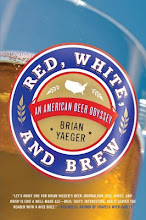 Fall, 1994, found me in St. Petersburg, Russia living in a foreign students dorm. Between the fact that our classrooms were in the adjacent wing and that it typically hit below freezing outside, we spent much of our time in our floor lounge. It was barely post-Soviet Russia and my guess is the décor hasn’t changed yet: drab beige wallpaper and sandpaper colored drapes all housed in a massive structure that looked like a sand castle made out of a moving box, with windows.
Fall, 1994, found me in St. Petersburg, Russia living in a foreign students dorm. Between the fact that our classrooms were in the adjacent wing and that it typically hit below freezing outside, we spent much of our time in our floor lounge. It was barely post-Soviet Russia and my guess is the décor hasn’t changed yet: drab beige wallpaper and sandpaper colored drapes all housed in a massive structure that looked like a sand castle made out of a moving box, with windows.Allene, the Scottish girl I fancied, spent much of her time in the dorm room belonging to Raul from Portugal (who roomed with Samer, the Lebanese med student). She turned me on to Glayva, a spiced whisky, but when I think about those days, it was another winter warmer that always springs to mind. Baltika.
True, Russia is vodka country. Think resealed little bottles sold as kiosks for a dime. I was once treated to bathtub vodka with briney bits like garlic cloves and lemon peel that was divine. But in the fall of 1994, the kiosks started to fill with a fairly new brand of beer. Up till that point, all Russian beers were plain awful. Luckily, a wealth of German, Czech, Polish, and Scandinavian beers could be hunted down. Baltika quickly replaced vodka as our drink of choice. We’d often have sing-alongs thanks to Dean, who had picked up a cheap guitar from a store for a few bucks or “quid,” since he was British. And while chess was big, backgammon became a floor-wide obsession. To this day, I can’t play backgammon without the malty taste of Baltika tugging at my tongue.
I say malty because there were four primary brands of Baltika. Back in Russia, they were simply 1, 2, 3, and 4. The green labeled 1 was a light beer, tiptoeing in at 4.4% ABV, but it was undrinkable. The middle two got progressively better. But it was the number 4 that had most of us salivating. Whereas the others fetched as little as 75 cents a half-litre bottle, we gladly “splurged” a whole dollar—then around 4,000 rubles—on number 4s. The stately black labels of “originalnoye” or “original” indicated that each bottle, weighing in at 5.6% which was a lot for us 20-year-olds, considering I’d come from the school of A-B’s Natty Light heretofore. On a warm enough night, I’d volunteer to go on a Baltika run which entailed walking under a mile to the open air marketplace and coming back carrying a plastic pallet of bottles. Of course, someone else would have to return the empties.
On a cold night, we’d bribe someone into making a Baltika run by buying a couple bottles for him. I’m California born and bred, so braving the sub-zero night and having my nose hairs feel as if they would freeze and crack off was rarely worth it, but sometimes it was.
This dark lager worked as both a warming agent and paired excellently with anything. A couple shwarmas at the marketplace and a couple number 4s made for a perfect meal home in the dorm or on the go. After a few months, I began craving simple chips and salsa like mad. When I found an errant jar of jalapenos in a back alley store, I loaded up on tomatoes, onions, peppers and garlic and fashioned some homemade salsa. That Baltika 4 washed it down like manna. It was a highlight of Russian-Mexican relations, if only for a few friends I shared my treasure with.
Toward the end of foreign studies, when the days lasted hours and the nights lasted forever and something like the sun was a fuzzy memory, stronger Baltikas like number 6, Porter, started popping up, but just the recollection of a number 4 takes me back to that dormitory, those all-night backgammon marathons, and the collection of students from around the world who, for one semester, were all my comrades.







No comments:
Post a Comment